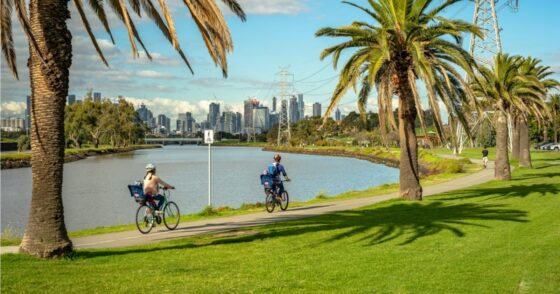
The City of Melbourne has decided to create new green spaces, in addition to protecting the existing parks and multiplying projects to reduce CO2 emissions in the city. The aim is to become a metropolis that emits almost no greenhouse gases, to succeed in its ecological transition and to gain in living comfort.
In addition to maintaining and protecting the city’s parks and gardens, the City of Melbourne will invest in new green open spaces, particularly in the most populous suburb of Southbank. An additional green space the size of two Olympic-sized swimming pools will be built in the north of the city. This project alone includes new play and picnic facilities, 48 new trees and safe walkways.
A total of 2,400 new trees will be planted this year. Tree species are selected on the basis of their good climate resilience, to ensure that the entire ecosystem can adapt to high heat and drought, while cooling the inhabitants.
100% renewable energy by 2030
Note that major works will also be undertaken to collect rainwater in the city. It will then be used to irrigate and protect city parks and gardens from drought. In addition, the city wants to equip itself with new structures to cope with possible natural disasters such as floods or heat waves.
In order to always strive for zero CO2 emissions, the municipality will step up its Power Melbourne renewable energy project, which consists of installing an entire network of batteries in the city, to store and use this energy source when needed. This network will mainly be installed on public buildings. Melbourne aims to become a city fully powered by renewable energy by 2030.
Nearly 50 million Australian dollars will thus be invested, making Melbourne a benchmark, in Australia and around the world, for a city that promotes the benefits of nature and sustainable resources.
ETX Daily Up